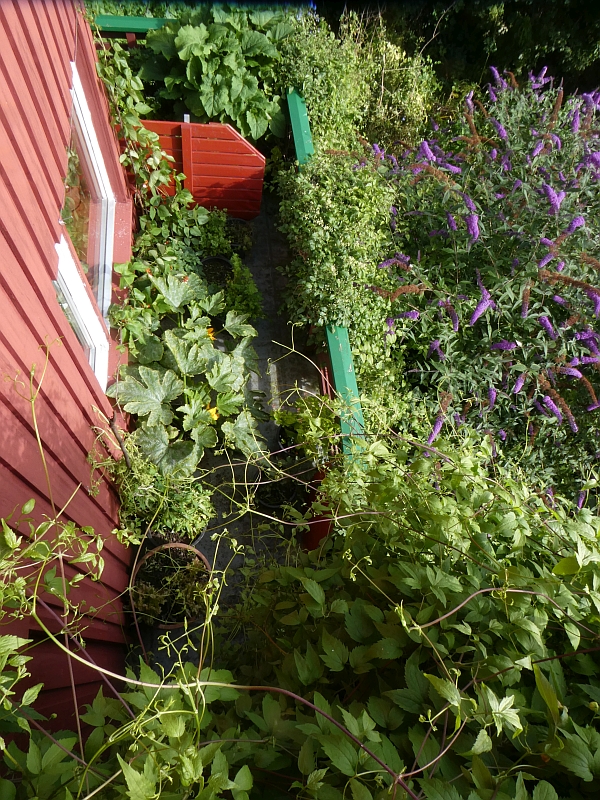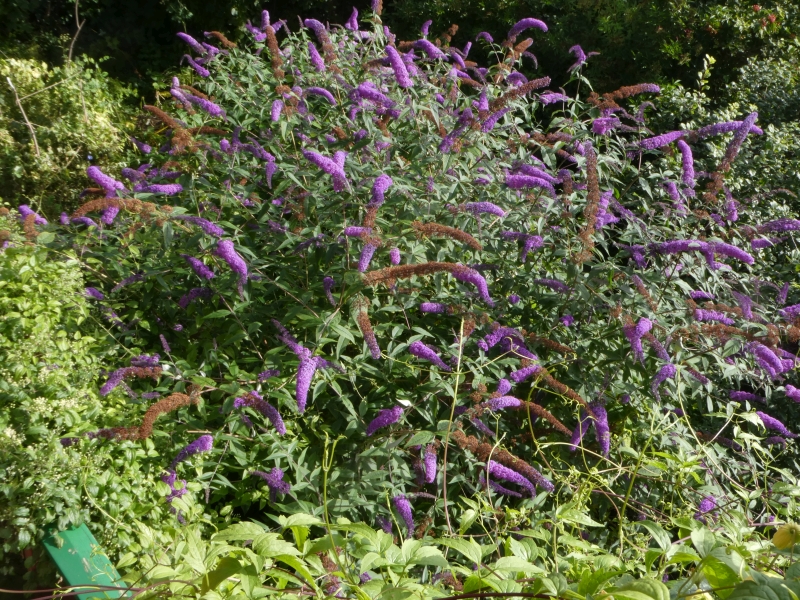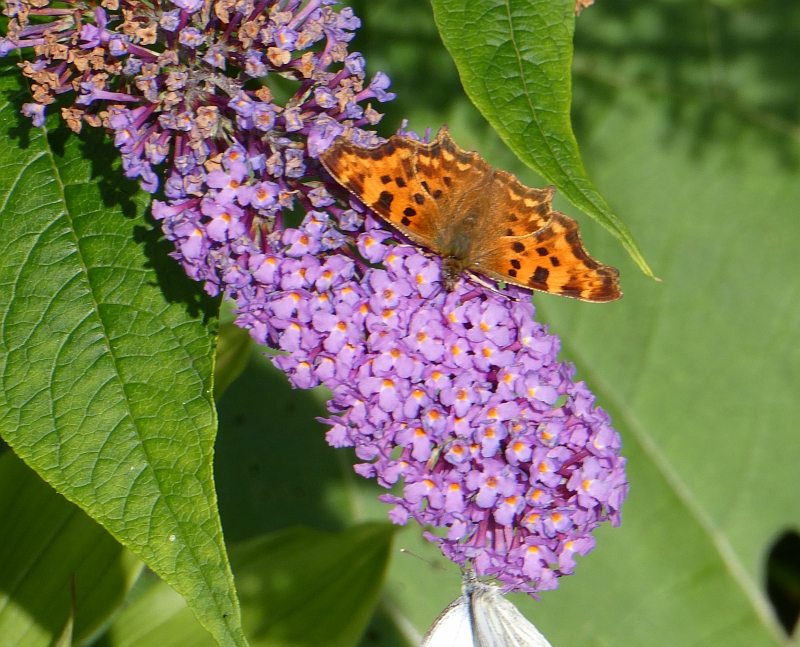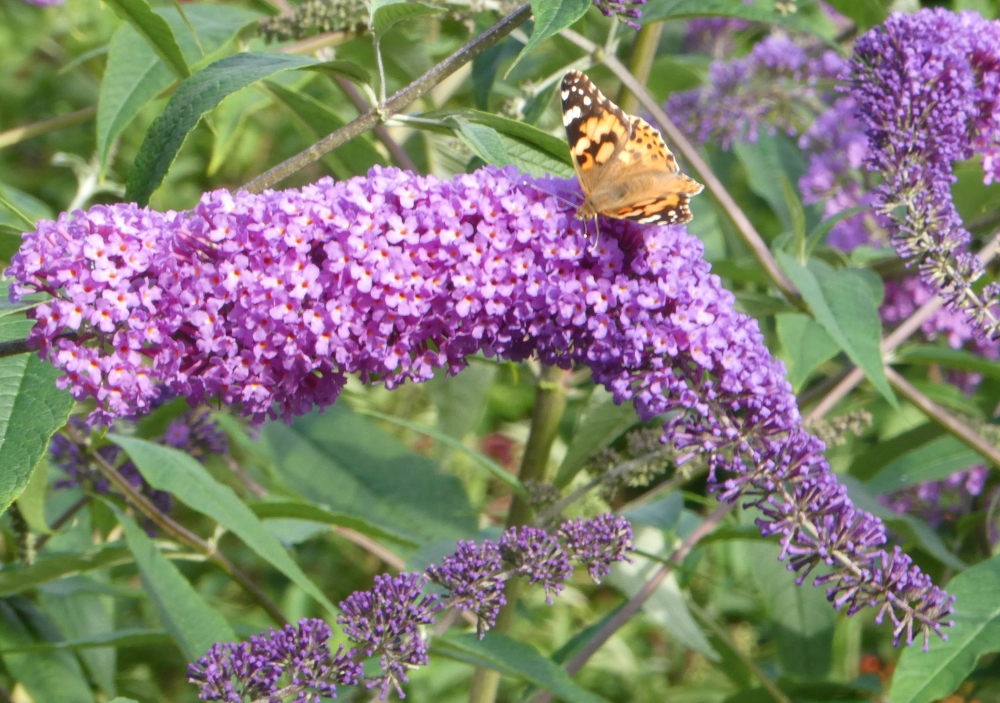
Back from the UK and the first night I put out the moth trap on 15th / 16th August (they are released again) I was surprised to find that scarce silver Y moths / skogmetallfly (Syngrapha interrogationis) were everywhere and a count yielded 53 moths of this species. My previous highest count was 22 in August 2022, so I wondered how unusual this was. A quick check on our national species reporting database artsobservasjoner.no and it turns out this was the highest number ever recorded in Norway – next highest was 50 in 1997 in southern Norway and then 25 in Namsos, north of here. This is a moorland species and the larvae live on heather, bilberry and bog bilberry (røsslyng, blåbær og blokkebær) although a Swedish page mentions that they can also live on birch; see https://vilkenart.se/Art.aspx?Namn=Syngrapha%20interrogationis
This is a regular visitor in my garden in small numbers and both the high counts were made with the moth trap very close to a large Buddleja davidii in full flower. I haven’t yet seen them on the Buddleja, but I found at least one picture of this species on Buddleja, see https://www.lepidoptera.no/omrade/?a_id=1018865, so I guess this is what is attracting them as my garden is a few kilometres away from its moorland habitat, unless they have adopted birch in the garden. At the same time there are less than normal numbers of its cousin silver y (gammafly) and large yellow underwing (hagebåndfly) both of which frequent the Buddleja, sometimes in large numbers! Scarce silver Y is largely a night flyer as is large yellow underwing whereas silver Y flies both night and day!
At the same time there are less than normal numbers of its cousin silver y (gammafly) and large yellow underwing (hagebåndfly) both of which frequent the Buddleja, sometimes in large numbers! Scarce silver Y is largely a night flyer as is large yellow underwing whereas silver Y flies both night and day!
Tag Archives: Hagebåndfly
Buddleja davidii
One of the few plants in my garden which isn’t edible is my large Buddleja davidii (butterfly bush / sommerfuglbusk), a wonderful entomental (loved by insects and an ornamental appreciated by Homo sapiens too!). It is strategically placed beneath the balcony so that I can look down from above. As chance has it, I had also planted old man’s beard / tysk klematis (Clematis vitalba) to climb up onto the balcony. The latter is equally popular with late summer pollinators, mainly hoverflies. So this is one of the best spots for watching and photographing the local insect life. However, after coming into flower 2-3 weeks ago there were no butterflies, but a rare 20C day brought them out and both painted lady (tistelsommerfugl; the first since the bumper year two years ago and only the second recorded this summer in Trøndelag county), red admiral (admiral) and comma / hvit C were out yesterday! But it’s at night that the butterfly bush is covered with pollinators, notably an estimated 200 large yellow underwing moths (hagebåndfly)









